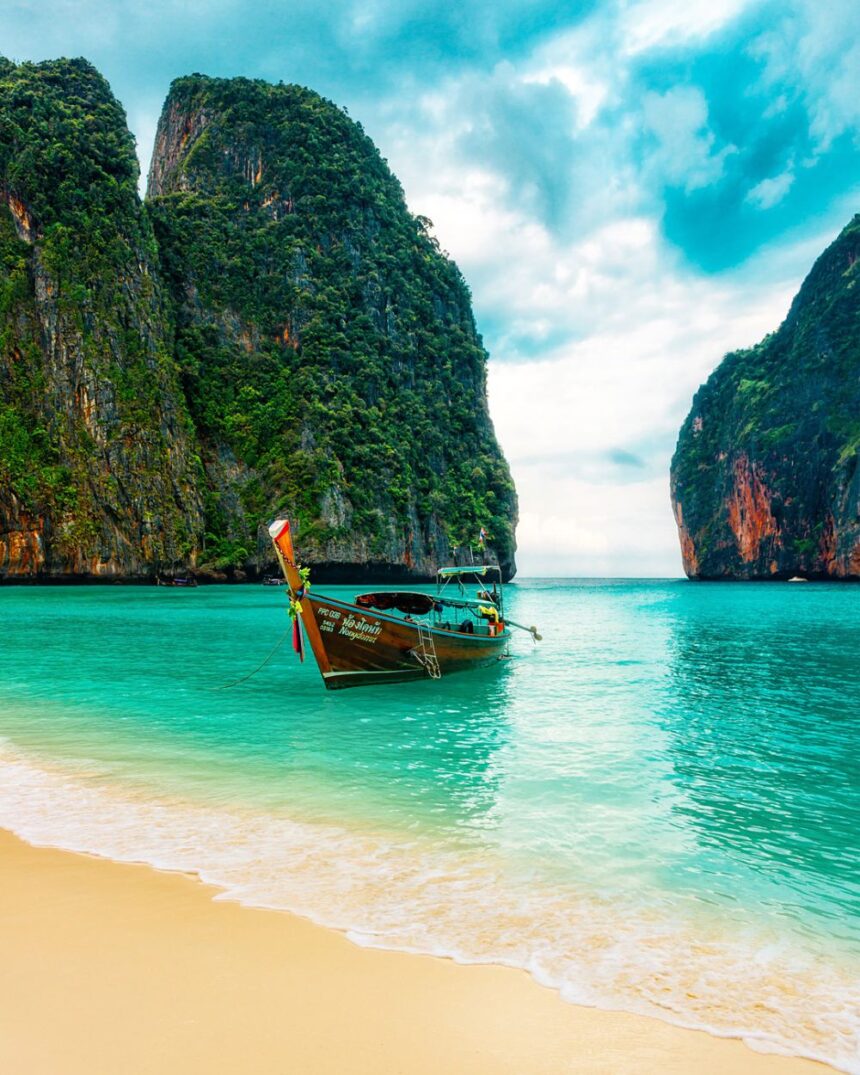10 Stunning Beaches Around the World That Will Leave You Awestruck
Beaches have always held a special place in human imagination—symbolizing relaxation, adventure, and natural beauty. From golden sands and turquoise waters to hidden coves and vibrant marine life, the world’s best beaches offer experiences that refresh the mind, rejuvenate the body, and inspire the soul. In this article, we explore the history, facts, timeline, significance, daily life impacts, FAQs, and societal importance of beaches worldwide, making it a complete human-friendly guide for travelers and beach lovers.
- History of Beaches
- Top 10 Stunning Beaches in the World
- 1. Grace Bay, Turks and Caicos
- 2. Anse Source d’Argent, Seychelles
- 3. Whitehaven Beach, Australia
- 4. Navagio Beach, Greece
- 5. Baia do Sancho, Brazil
- 6. Pink Sands Beach, Bahamas
- 7. Lanikai Beach, Hawaii
- 8. Matira Beach, Bora Bora
- 9. Seven Mile Beach, Cayman Islands
- 10. Playa Paraiso, Cuba
- Timeline of Beaches as Tourist Destinations
- Facts About Beaches
- Significance of Beaches
- Daily Life Impacts
- Observance and Best Practices
- Wishing and Benefits
- FAQs About World Beaches
- Review Section
- Conclusion
History of Beaches
Beaches are natural formations created over millions of years due to the action of waves, tides, and wind on coastal land. The word “beach” comes from the Old English “bæce”, meaning a shoreline.
Historically, beaches have played significant roles in:
Trade and Transportation: Coastal settlements and ports have been vital for commerce for centuries.
Recreation: Ancient civilizations like the Greeks and Romans used beaches for leisure and health practices.
Cultural Significance: Many coastal communities have festivals, rituals, and traditions centered around beaches.
With the rise of tourism in the 20th century, beaches became global destinations for recreation, water sports, and wellness.
Top 10 Stunning Beaches in the World
1. Grace Bay, Turks and Caicos
Famous for soft white sands and clear turquoise waters.
Ideal for swimming, snorkeling, and relaxing.
2. Anse Source d’Argent, Seychelles
Known for pink sand, granite boulders, and shallow waters.
Popular for photography and honeymoon trips.
3. Whitehaven Beach, Australia
Iconic for silica-white sands and emerald waters.
Eco-friendly tourism and strict environmental protections.
4. Navagio Beach, Greece
Famous shipwreck adds a unique charm.
Surrounded by limestone cliffs and crystal-clear water.
5. Baia do Sancho, Brazil
Accessible via steep ladders; known for pristine beauty and rich marine life.
Excellent for snorkeling and diving.
6. Pink Sands Beach, Bahamas
Distinct pink sand due to coral fragments.
Ideal for romantic getaways and water sports.
7. Lanikai Beach, Hawaii
Soft sand and calm waters perfect for swimming and kayaking.
Known for picturesque sunrises.
8. Matira Beach, Bora Bora
Tropical paradise with shallow waters and coral reefs.
Perfect for snorkeling and peaceful retreats.
9. Seven Mile Beach, Cayman Islands
Long stretches of golden sand with luxury resorts.
Popular for family vacations and water activities.
10. Playa Paraiso, Cuba
Untouched, scenic beach with calm, clear waters.
Ideal for relaxation and nature appreciation.
Timeline of Beaches as Tourist Destinations
Ancient Times: Used for trade, fishing, and leisure in Mediterranean civilizations.
17th–19th Century: European aristocrats popularized beach resorts.
20th Century: Mass tourism and beach holidays became mainstream.
21st Century: Focus on eco-tourism, sustainability, and adventure sports.
Facts About Beaches
Beaches cover nearly 31% of the world’s coastline.
White sands are usually quartz; pink sands come from coral fragments.
Beaches are dynamic landscapes, constantly reshaped by waves and wind.
Tropical beaches often host coral reefs, supporting rich marine biodiversity.
Coastal tourism contributes significantly to global economies, providing employment and livelihoods.
Significance of Beaches
Beaches are more than just leisure spots—they have ecological, cultural, and economic significance:
Ecological Importance: Protect coastlines, provide habitats for marine species, and support biodiversity.
Cultural and Recreational Value: Sites for festivals, rituals, and social gatherings.
Economic Role: Tourism, fishing, and recreation support local and national economies.
Health Benefits: Promote physical activity, mental relaxation, and exposure to nature.
Daily Life Impacts
For Locals
Coastal communities rely on tourism and fishing for livelihood.
Beach culture fosters social cohesion and community engagement.
Provides opportunities for education in marine conservation and hospitality.
For Tourists
Enhances mental and emotional well-being.
Offers adventure sports, eco-tourism experiences, and cultural interactions.
Encourages sustainable travel practices and environmental awareness.
Observance and Best Practices
Respect local regulations regarding littering and wildlife.
Participate in eco-tourism and conservation programs.
Follow guidelines for water safety, especially during swimming or water sports.
Visit during safe seasons to avoid storms and high tides.
Support local businesses for authentic cultural experiences.
Wishing and Benefits
Beaches inspire positive feelings and are often associated with relaxation, joy, and adventure:
“May your journey to the world’s most beautiful beaches bring you peace, excitement, and unforgettable memories.”
Benefits include:
Physical activity through swimming, surfing, or walking
Mental relaxation and stress reduction
Cultural appreciation and learning
Social bonding with friends and family
Connection with nature and environmental awareness
FAQs About World Beaches
Q1: Which beach is best for family vacations?
A1: Seven Mile Beach (Cayman Islands) and Lanikai Beach (Hawaii) are ideal due to calm waters and amenities.
Q2: Can beaches be dangerous?
A2: Yes, strong currents, tides, and jellyfish can pose risks. Follow safety instructions.
Q3: Are beaches accessible year-round?
A3: Tropical beaches are best visited during dry seasons; temperate beaches may have off-season limitations.
Q4: How can tourists contribute to beach conservation?
A4: Avoid littering, participate in cleanup drives, and support eco-friendly tourism.
Q5: Are there cultural events on beaches?
A5: Many beaches host local festivals, traditional ceremonies, and sports events, offering cultural experiences.
Review Section
Traveler Experiences on World’s Best Beaches:
Sophia, 29 (Tourist): “Anse Source d’Argent in Seychelles is breathtaking! The pink sands and shallow waters are perfect for photography and relaxation.”
Liam, 35 (Traveler): “Navagio Beach in Greece was a dream. The cliffs, shipwreck, and turquoise water are unforgettable.”
Maria, 32 (Tourist): “Whitehaven Beach in Australia amazed me with its pristine sands and eco-friendly practices. Truly a paradise.”
Rating: ★★★★☆ (4.8/5)
Conclusion
Beaches are natural treasures that combine scenic beauty, adventure, and cultural richness. From the Caribbean to the Pacific, the world’s best beaches offer experiences that nurture the mind, body, and spirit.
For locals, beaches are vital for livelihoods, community bonding, and cultural identity. For tourists, they provide adventure, relaxation, and a connection with nature. By embracing responsible tourism and eco-conscious practices, we can ensure these stunning landscapes continue to thrive for generations.
Whether you are seeking thrills, tranquility, or cultural immersion, the world’s beaches hold infinite opportunities for joy, reflection, and unforgettable memories.








